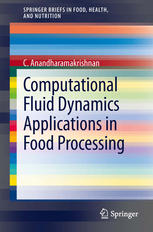

Most ebook files are in PDF format, so you can easily read them using various software such as Foxit Reader or directly on the Google Chrome browser.
Some ebook files are released by publishers in other formats such as .awz, .mobi, .epub, .fb2, etc. You may need to install specific software to read these formats on mobile/PC, such as Calibre.
Please read the tutorial at this link: https://ebookbell.com/faq
We offer FREE conversion to the popular formats you request; however, this may take some time. Therefore, right after payment, please email us, and we will try to provide the service as quickly as possible.
For some exceptional file formats or broken links (if any), please refrain from opening any disputes. Instead, email us first, and we will try to assist within a maximum of 6 hours.
EbookBell Team

4.0
56 reviewsComputational Fluid Dynamics (CFD) has been applied extensively to great benefit in the food processing sector. Its numerous applications include: predicting the gas flow pattern and particle histories, such as temperature, velocity, residence time, and impact position during spray drying; modeling of ovens to provide information about temperature and airflow pattern throughout the baking chamber to enhance heat transfer and in turn final product quality; designing hybrid heating ovens, such as microwave-infrared, infrared-electrical or microwave-electrical ovens for rapid baking; model the dynamics of gastrointestinal contents during digestion based on the motor response of the GI tract and the physicochemical properties of luminal contents; retort processing of canned solid and liquid foods for understanding and optimization of the heat transfer processes. This Brief will recapitulate the various applications of CFD modeling, discuss the recent developments in this field, and identify the strengths and weaknesses of CFD when applied in the food industry.